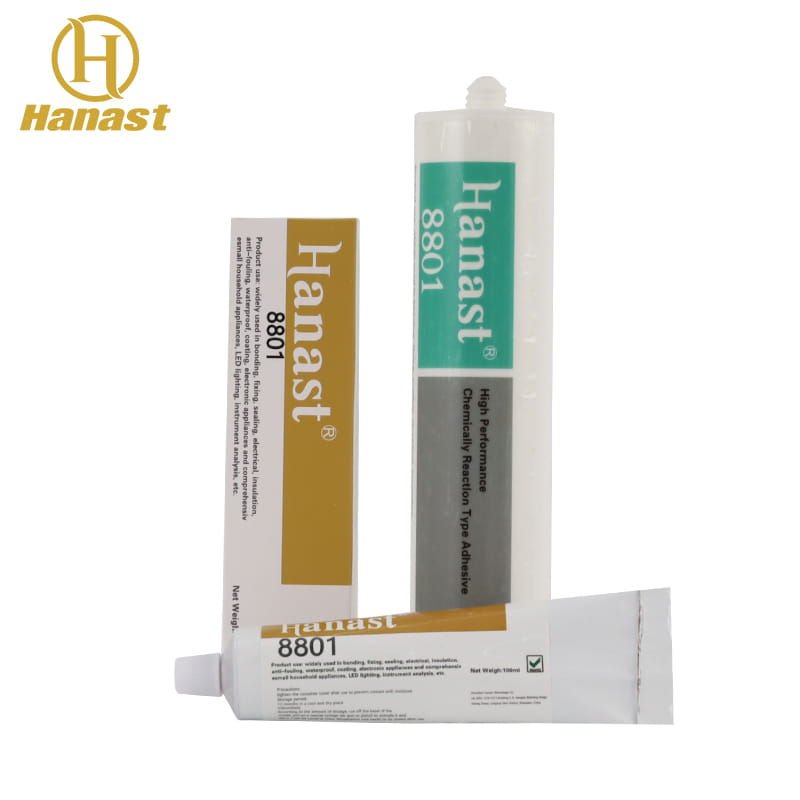Typical uses and operation methods of RTV adhesive
 Jan 09,2023
Jan 09,2023

 Hanast
Hanast
RTV silica gel is a kind of room temperature vulcanized silicone rubber. Its appearance is milky white viscous liquid, which is prepared by compounding silicone rubber, cross-linking agent, filler and other components. RTV silica gel is a solvent-free, corrosion-free, single component room temperature vulcanized silicone rubber. It has a long storage period, stable performance, and can be used to bond common metal and non-metallic materials, so it is suitable for bonding and sealing between various metals, metal and non-metallic materials.
As a bonding, sealing, insulating, moisture-proof and shockproof material, RTV silica gel is widely used in the bonding and sealing of electronic components, semiconductor materials, electronic appliances and other equipment, as well as the waterproof and sealing of electric heaters and electronic instruments, and the filling and sealing of electronic components. Such as the sealing of electric heating end, the bonding of small motor magnetic tile and metal shell, the bonding and sealing of automobile lamps, optical instruments and lenses, the bonding of electronic instrument shell, the insulation protection of motor, the bonding and sealing of electronic components, etc.
The semi flowing one component room temperature curing silicone rubber is neutral curing. It emits low molecules through condensation reaction with water in the air to cause crosslinking, and vulcanizes into high-performance elastomer. It is non corrosive to most metals and plastics, and has good adhesion. It has excellent cold and hot alternation resistance, aging resistance, electrical insulation, and excellent moisture-proof, waterproof, anti-seismic, corona resistance, and electric leakage resistance. Fully comply with the requirements of EU ROHS Directive.
Operation introduction
1. Clean the surface: clean the surface of the stuck or coated objects to remove rust, dust and oil stains.
2. Implementation plan??? Glue: unscrew the cap of the rubber hose, first puncture the seal with the tip of the cap, squeeze the glue to the cleaned surface, and then apply or inject it.
3. Curing: When the coated parts are placed in the air, there will be slow skinning. Any operation should be completed before the surface is skinned. The curing process is from the surface to the interior. The adhesive will be cured to a depth of 2~4mm within 24 hours (room temperature and 55% relative humidity). If the position is deep, especially in the position that is not easy to contact with air, the time for complete curing will be extended. If the temperature is low, the curing time will also be extended.
4. Do not move, use or package the parts after operation until they reach sufficient strength.




 Home
Home
 RTV-2 silicone potting adhesive
RTV-2 silicone potting adhesive  You May Also Like
You May Also Like







 Tel
Tel
 Email
Email
 Address
Address












